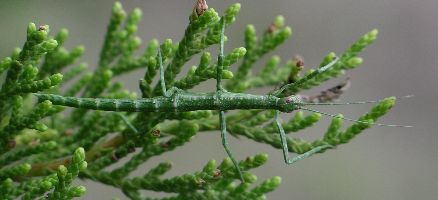 walking stick | 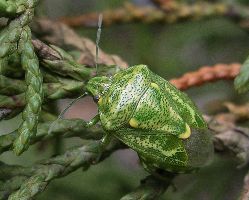 stink bug |
Here in the central Texas area, the overall impression of the landscape is anything but spectacular. There are scrubby forests, mostly dry creeks, weedy fields, and rocky hills. When I make a foray outside to take photographs, I might stay as close to home as our own backyard, or visit places within about 15 miles of our humble abode. The variety of habitats, at the smallest level, is quite sufficient to hold my interest. Dry and rocky creek beds, swampy bottomlands along streams and rivers, cactus patches, and small meadows provide the diversity necessary to find all manner of subjects for my lens.
 walking stick |  stink bug |
One of the more unusual and unique habitats that I've discovered is that of the cedar edge. It's not really cedar, as that is just the local name for the juniper trees that are so common here. Most people associate the trees with "cedar fever," an allergy to the wind-borne juniper pollen produced by the male trees in the winter. The cedar edge occurs where tangled juniper tree groves end at open, mowed fields. It is possible to walk entire perimeters around pastures or hay fields and see almost nothing but the thick, scaly needles of the junipers. These often grow best on the edges of mixed woodlands, and where the trees encounter open space, they grow their leaves outwards like shrubs, all the way to the ground.
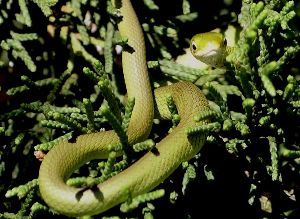 rough green snake |
I occasionally find rough green snakes (yes, that is their accepted common name), mostly in more broadleaved foliage. These small and slender arboreal snakes have evolved to match the colors of leaves and are rarely found on the ground. Although their color is not adapted to the darker green of juniper, that small fact didn't stop the young snake pictured at left from exploring the branches in search of prey.
There are a great many insects and spiders that have evolved to blend in with the cedar branches. Some actually eat the young pine needles, although it is quite a tough diet. The other creatures are probably there hunting. I've found caterpillars, beetles, true bugs, spiders, butterflies, moths, flies, and wasps. Some of the more specialized insects include the walking sticks and caterpillars of the juniper hairstreak butterfly, both feeding on the spiky tips of the needles as well as blending in with some of the best camouflage I've ever seen. A very interesting predator is the snakefly, the adults of which are only around for a brief time each spring. These cryptic little relatives of the lacewing are not green, but they are striped and become almost invisible when they land on a branch and crawl into the foliage. The bright green Banasa euchlora (no common name) is an attractive stink bug found on juniper. Predatory stink bugs and assassin bugs also lurk among the needles. Many spiders hide during the day, only hunting or building webs at night, and there are a number that favor the junipers. Several of these even have green and gray colors to help them blend in while hiding.
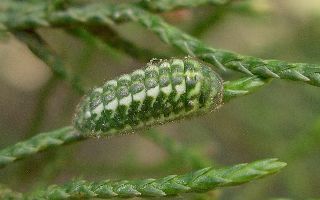 juniper hairstreak caterpillar | 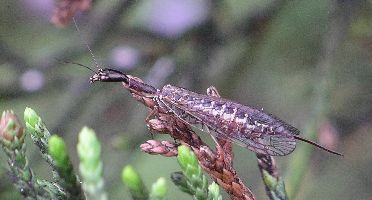 snakefly |
So the next time you are wandering about in an ordinary old field with those commonplace juniper trees all around the edge, take a closer look. The inhabitants might surprise you.